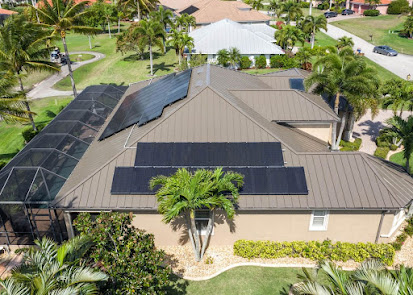Unfolding 3 Common Commercial Roof Issues and the Solutions
A business building's roof serves as its first line of defense against the weather. It protects the company, its possessions, and its occupants from the elements (rain, sun, wind, and snow). Commercial Roofing can nevertheless experience a fair share of problems over time, just like any other type of structure. This post will outline four of the most prevalent commercial roof problems and discuss their causes, effects, and potential fixes.
Roof Leaks: Roof leaks are perhaps the most pervasive of all commercial roof issues. They can stem from various sources, including damaged flashing, punctured membranes, clogged drainage systems, or simply the natural aging of roofing materials.
Consequences: The consequences of roof leaks are not limited to aesthetic damages. They can lead to water intrusion, compromising the structural integrity of the building. Additionally, leaks can result in mold growth, reduced indoor air quality, and damage to valuable equipment and inventory.
Solutions: Regular roof inspections, prompt identification of leaks, and effective repairs are essential. Depending on the severity of the leak, solutions may involve patching, flashing replacement, or even partial membrane replacement.
Ponding Water: Battling the Puddles
Flat or low-sloped commercial roofs are particularly susceptible to ponding water — accumulations of water that do not drain properly. Improper roof design, clogged drains, or a lack of proper maintenance can cause this.
Consequences: Ponding water can gradually weaken roofing materials, leading to deterioration and leaks. Over time, it may even compromise the roof's structural integrity, resulting in sagging or structural damage.
Solutions: Improving roof slopes, ensuring proper drainage, and addressing any clogs are crucial steps to prevent ponding water. Regular roof inspections can help detect drainage issues early.
Membrane Cracking and Blisters: Heat's Impact
Commercial roofs are exposed to intense sunlight and temperature fluctuations. Over time, this exposure can lead to the cracking and blistering of roofing membranes. Blisters can form when trapped moisture or air expands due to heat.
Consequences: Cracked membranes compromise the waterproofing of the roof, allowing water to seep in. Blisters can worsen over time, leading to more extensive damage and potentially costly repairs.
Solutions: Regular maintenance to ensure proper ventilation and insulation can mitigate the impact of temperature fluctuations. For damaged membranes, professional repairs or replacements may be necessary.
Conclusion
It is important to comprehend the ubiquitous issues that plague commercial roofs as the first step in ensuring their longevity and functionality. Regular maintenance, prompt repairs, and engaging a reputed Commercial Roofing Company can prevent minor issues from escalating into major problems. By addressing leaks, standing water, membrane damage, and flashing issues, you'll be well on your way to maintaining a robust and dependable commercial roof that protects your business for years to come.



.jpg)
Comments
Post a Comment